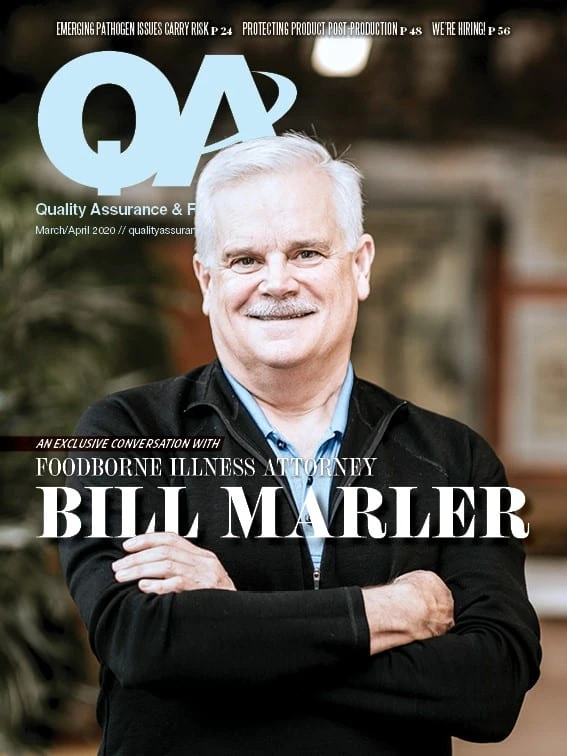
Biofilms are complex matrices of extracellular matter that can harbor micro-organisms. Remco’s Education and Support Manager Amit Kheradia explains why adequate mechanical cleaning of contact surfaces is required to remove rigid biofilms that may allow for pathogens to survive, grow, and spread to contaminate other facility areas and food products.
1 How are biofilms different from the “free-floating” bacterial pathogens?
“Free-floating” planktonic pathogens like L. monocytogenes may secrete a slimy, extracellular polymeric substance (EPS) that can enmesh other organisms, nutrients, moisture, and foreign material to form a self-sustaining microbial biofilm community. Unlike the planktonic cells, biofilms will firmly attach to a contact surface, which makes them much harder to remove.
2 Why should food facilities be concerned about biofilm-buildup on the surfaces?
Salmonella and Listeria monocytogenes (responsible for causing about 44% of FDA food recalls) are capable of developing biofilms. With time, resident pathogenic strains may emerge in a facility that are not only difficult to eradicate, but may also persist in the environment to cross-contaminate food and surfaces for longer periods at unpredictable rates. Therefore, timely biofilm control is necessary to avoid foodborne illness outbreaks and product recalls.
3 Where can you find biofilms in a typical food production plant?
Typical spots to look out for are cracks, narrow nooks and crevices, rough welds, hollow tubes and supports, close-fitting metal-to-metal or metal-to-plastic surfaces, worn seals, gaskets, and other areas that cannot be reached during routine cleaning and sanitizing. It’s less likely biofilms will form on even, smooth, regularly cleaned, sanitized, and maintained surfaces.
4 What are some key challenges encountered when removing biofilms from surfaces?
Biofilm-enclosed microbes can be up to 3,000 times more resistant to chemicals than the free-floating cells. Moreover, a biofilm can protect pathogens from antimicrobials, heat, and radiation. They are also more difficult to detect and remove when they mature with time, or as they evolve to dry surface biofilms capable of surviving in low-moisture environments.
5 Which biofilm control strategy is most effective, and how can Remco help?
Risk-based scheduled cleaning of facility areas, fixtures, equipment, and tools is the best approach when integrated with preventive maintenance, sanitary design, hygienic practices, and zoning programs. Remco can assist companies with the right selection, storage, care, and maintenance of cleaning, sanitation and material handling tools. Moreover, we have tools, such as the Vikan UST brushes, that are capable of easy decontamination after surface biofilm removal.
Get curated news on YOUR industry.
Enter your email to receive our newsletters.

Explore the March April 2020 Issue
Check out more from this issue and find your next story to read.
Latest from Quality Assurance & Food Safety
- Hearthside Food Solutions Recalls Breakfast Sandwiches Due to Undeclared Allergen
- Walker’s Wine Juice Recalls Pumpkin Juice Due to Botulism Risk
- The Cascading Food Safety Impacts of Tariffs on the Food Industry
- Tyson Ventures Calls Startups to Apply for Tyson Demo Day
- Student Finalists Selected for IFT Product Development Competitions
- Martin A. Makary Sworn in as FDA Commissioner
- Cargill Kitchen Solutions Recalls Liquid Egg Products Due to Unapproved Substance
- Eagle Product Inspection’s PXT and SimulTask PRO Integrate for Contaminant Detection







